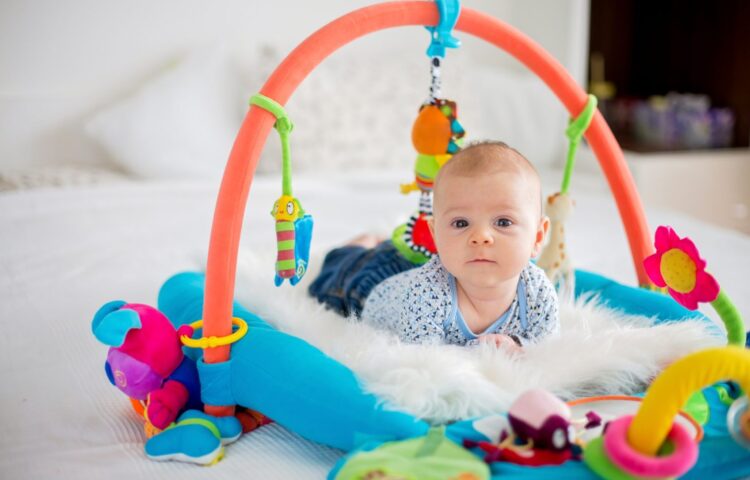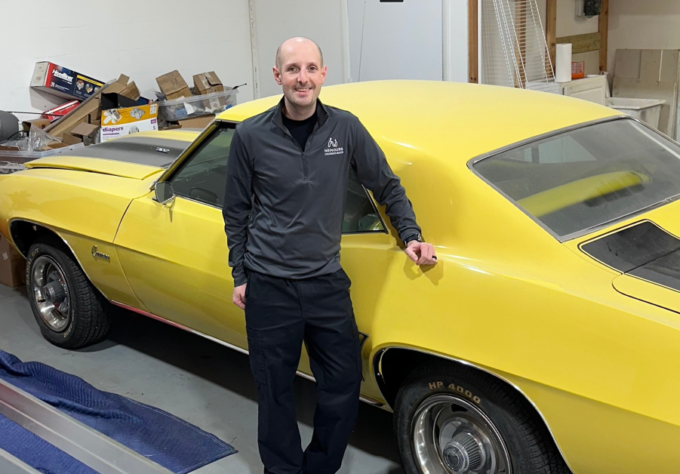We’ve all seen them, maybe even used them at some point. The infant walker. Usually a round or square structure with a seat in the middle, the baby walker has “legs” with wheels, so baby can move around and also play with the many activities on the attached tray. They seem innocent, even helpful to baby’s development. But from 1990 to 2014, nearly 230,676 babies under 15 months old were treated in emergency departments for walker-related injuries.
Risks of Baby Walker Use
The number one risk from baby walkers is falling down stairs, followed by falling out of the walker. The majority of injuries are to the head and neck. But there are also other risks because while in the walker babies can reach for things that are normally too high—things like pot handles on stove tops or a tablecloth where there is hot coffee on a table.
The concern over the safety of infant walkers isn’t new. For years health care providers have warned about their dangers, seeing firsthand the injuries that led to emergency room visits around the country. These injuries included skull fractures, concussions, and broken bones. Back in 2010, the U.S. Consumer Product Safety Commission set mandatory safety standards on infant walkers in an effort to prevent tipping and falling and to make sure babies stay securely within the walker.
We have come a long way from the nearly 21,000 reported injures back in 1990 to the estimated 2000 injuries reported in 2014. But a recent study published by the American Academy of Pediatrics (AAP), has experts concluding the risk of injury from baby walkers is still way too high, and the only solution is the complete ban.
These risks far outweigh any perceived benefit.
Thinking that a baby walker will help your child learn to walk faster, is not realistic. Experts say this is a myth. Walking can even be delayed due to infant walker use. You may also think placing baby in a walker for a few minutes will free you up to do some quick chores. That too is a myth. In a walker, a toddler can zoom nearly three feet in just one second! Think how quickly this allows them to move out of sight and into danger.
Lots of Options for Baby’s Development
If you’re really looking for a toy structure that helps with baby’s development, there are plenty of options:
- Stationary activity centers: These look just like walkers, but without wheels. The usually have seats that bounce and rotate so baby can easily see and play with all of the activities.
- Play yard or playpen: Still a perfect option. Within a play yard, your baby can practice sitting, crawling and walking while grabbing for toys within their safety zone.
- High chairs: They aren’t just for eating! Some kids love to sit in the chair and play with toys on the tray, all while staying within your sight.
- Belly time! There really is nothing better for baby than time on the belly for development of strength and preparation for walking. Create some space, lay down a blanket, space out the toys and watch your baby reach, grab, and move toward all those wanted objects!
Try these Games & Activities
There are a number of games and activities that you can use to help your baby build the muscles and coordination needed to start walking. The following methods are fun and safe ways for babies to learn to walk:
- Assisted Walking: Standing behind your baby, place your hands around their upper arms and pull them up to a standing position. Gently pull one arm forward and then the other. Make sure not to pull them by the hands. Your little one’s feet will naturally follow as baby rotates hips to step. Keep practicing walking until your baby is ready to stop.
- Cruising: Babies can practice walking by “cruising” back and forth along a sofa or short bench/ottoman. Stand your little one next to the sofa and let them hold on with one hand as you gently hold the other for balance. Slowly move back and forth along the furniture and practice walking. For incentive, place your child’s favorite toy on one end.
- Cruise and Kick: As your baby holds onto furniture while cruising, place a foam ball on the floor next to their feet. Your little one may accidently kick the ball at first, but as you keep putting it back by their feet, your baby will start raising a foot to kick the ball on purpose. Place the ball on both sides so your child can practice kicking with both feet.
- Balls in a Basket: Scatter balls just out of your baby’s reach and then show your little one how to collect them and put them in a basket. How far you put the balls away from your child can depend on their comfort with the exercise. This activity develops confidence, leg muscles, coordination and the ability to balance while in motion, all while motivating your baby to take first steps.
One of the most exciting early milestones is seeing your baby take their first steps. There are plenty of ways to make the journey to walking as safe and fun as possible for your baby—please heed the AAP’s advice and ban the baby walker from your home.



